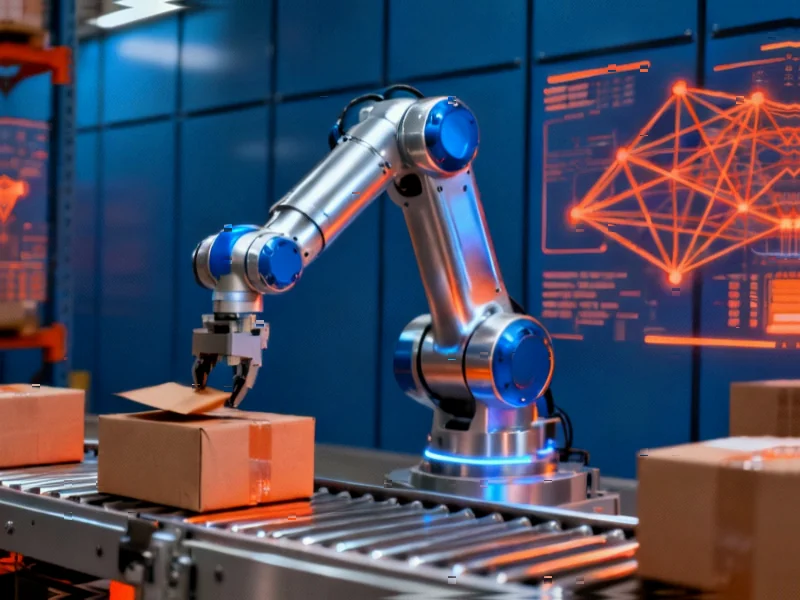The Automation Blueprint: Amazon’s Strategic Shift
Recent reports from The New York Times reveal Amazon’s ambitious plan to significantly expand its robotic workforce, potentially replacing approximately 600,000 human positions by 2033. This strategic move represents one of the largest corporate automation initiatives in modern history, with the retail giant aiming to automate 75% of its operational processes. While Amazon has utilized robotics in its warehouses for over a decade, this accelerated automation timeline signals a fundamental transformation in how the company approaches workforce management and operational efficiency.
Table of Contents
- The Automation Blueprint: Amazon’s Strategic Shift
- The Current Robotics Landscape at Amazon
- Economic Implications and Cost Savings
- Labor Market Dynamics and Employment Strategy
- Community Relations and Communication Strategy
- Broader Implications for the Labor Market
- The Future of Work in an Automated Economy
The Current Robotics Landscape at Amazon
Amazon’s relationship with automation technology dates back more than ten years, with robots progressively taking over tasks previously performed by human workers. These automated systems currently handle essential warehouse functions including package picking, sorting, and transportation throughout fulfillment centers. In June, Amazon announced a significant milestone: deploying over 1 million robots across its fulfillment and delivery network. This robotic workforce now represents approximately two-thirds the size of Amazon’s human workforce, highlighting the company’s substantial investment in automation infrastructure.
The scale of this robotic deployment positions Amazon as a global leader in industrial automation implementation, with implications for supply chain management across multiple industries. The company‘s systematic approach to integrating robotics demonstrates how large-scale operations can gradually transition toward automated solutions while maintaining operational continuity.
Economic Implications and Cost Savings
The financial motivation behind Amazon’s automation push appears substantial. According to Morgan Stanley analyst Brian Nowak, the company could achieve annual savings reaching $4 billion by 2027 through increased robotic implementation. These projected savings stem from reduced labor costs, increased operational efficiency, and decreased error rates in warehouse processes. The economic calculation becomes particularly significant when considering Amazon’s position as America’s third-largest employer, trailing only the federal government and Walmart.
To contextualize the potential impact, replacing 600,000 positions would be equivalent to eliminating a workforce larger than FedEx’s entire U.S. employee base, which currently stands at approximately 550,000 workers. This scale of workforce transformation raises important questions about the broader economic consequences of large-scale corporate automation., according to market trends
Labor Market Dynamics and Employment Strategy
Amazon’s approach to workforce management appears multifaceted. While internal documents suggest significant robotic replacement of human labor, the company simultaneously maintains active hiring initiatives. Amazon recently announced plans to fill 250,000 positions for the upcoming holiday season, creating apparent tension between automation goals and immediate staffing needs.
An Amazon spokesperson emphasized the company’s job creation record, stating that “no company has created more jobs in America over the past decade than Amazon” and characterizing leaked documents as representing “the perspective of just one team” rather than comprehensive corporate strategy. The company maintains that efficiency gains in automated areas enable investment in new business areas that create different types of employment opportunities.
Community Relations and Communication Strategy
Internal documents reveal Amazon’s awareness of potential community impact from large-scale automation. The company has reportedly considered strategies to maintain its image as a “good corporate citizen” through increased participation in local events and community programs. Communication guidelines within the documents suggest avoiding terminology like “automation” and “AI” in favor of less technical terms such as “advanced technology” and replacing “robot” with “cobot” to emphasize collaboration between human workers and automated systems.
This careful terminology management reflects corporate awareness of public perception regarding automation’s impact on employment. The approach demonstrates how large organizations navigate the complex relationship between technological progress and social responsibility.
Broader Implications for the Labor Market
Research from various economic studies suggests that robotic integration typically correlates with wage suppression in affected sectors. A MIT Sloan study indicated that each additional robot per 1,000 workers reduces wages by 0.42% and has eliminated approximately 400,000 jobs in the United States as of 2020.
Amazon addresses these concerns by emphasizing its commitment to creating “higher-paying positions” and investing in workforce upskilling programs. The company states that its track record demonstrates an ability to simultaneously create jobs while implementing automation technologies, though the nature of these jobs may differ significantly from positions being automated.
The Future of Work in an Automated Economy
Amazon’s automation strategy represents a microcosm of broader economic trends affecting multiple industries. As companies increasingly turn to robotic solutions for operational tasks, the nature of work continues evolving. Amazon’s position as both a major employer and automation leader places it at the center of ongoing discussions about technology’s role in the future workplace., as detailed analysis
The company maintains that “efficiency gains in one area enable us to invest in other areas — both existing and entirely new ones — that create additional value for customers,” suggesting that automation may create new categories of employment even as it transforms existing roles. How this balance between technological efficiency and workforce development plays out will likely influence corporate automation strategies across the global economy for years to come.
Related Articles You May Find Interesting
- Digital Identity Verification: The $95 Billion Blind Spot in Corporate Growth St
- European Aerospace Giants Forge Unified Space Powerhouse to Challenge Global Com
- Revolutionizing Industrial AI: How Next-Generation Storage Solutions Overcome Da
- Rethinking Hybrid Work: Why Quarterly In-Person Collaboration Outshines Weekly O
- China’s Chip Champion: How Chen Tianshi’s Cambricon Capitalizes on Tech Sovereig
References
This article aggregates information from publicly available sources. All trademarks and copyrights belong to their respective owners.
Note: Featured image is for illustrative purposes only and does not represent any specific product, service, or entity mentioned in this article.



